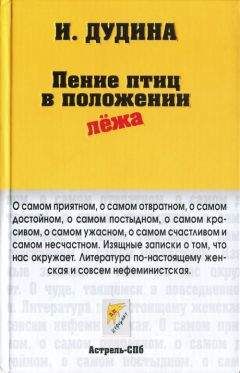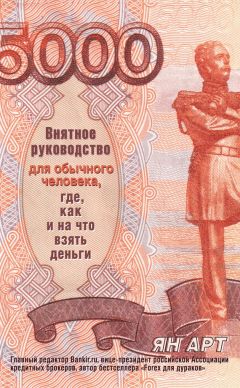Уильям Дэбарс - Модель Нового американского университета
Конец ознакомительного фрагмента.
Текст предоставлен ООО «ЛитРес».
Прочитайте эту книгу целиком, купив полную легальную версию на ЛитРес.
Безопасно оплатить книгу можно банковской картой Visa, MasterCard, Maestro, со счета мобильного телефона, с платежного терминала, в салоне МТС или Связной, через PayPal, WebMoney, Яндекс.Деньги, QIWI Кошелек, бонусными картами или другим удобным Вам способом.
Примечания
1
Группа восьми наиболее престижных частных университетов США.
2
Программа структурных преобразований высшего образования в Калифорнии, разработанная К. Керром и утвержденная в 1960 г.
3
Douglass J. (eel.). The New Flagship University: Changing the Paradigm from Global Ranking to National Relevancy. Palgrave, 2016.
4
Marginson S. The Dream Is Over: The Crisis of Clark Kerr’s California Idea of Higher Education. University of California Press, 2016.
5
Alekseev О. First Steps of Russian Universities to Top-100 Global University Rankings I I Higher Education in Russia and Beyond. 2014. Vol. 1. No. 1. P. 6. <http://herb.hse.ru/data/2014/05/30/1325398755/lHERB_01_Spring.pdf>.
6
Usher A. Structural Barriers to Russian Success in Global University Rankings // Higher Education in Russia and Beyond. 2015. Vol. 2. No. 4. P. 13–14.
7
Povalko A. Push for the Top // Times Higher Education. 2014. December 5. <https://www.timeshighereducation.com/world-university-rankings/2015/ brics-and-emerging-economies/analysis/push-for-the-top>.
8
Safiullin М., Savelichev М., Smolnikova Е. Higher Education Institutions on the Way towards Multidisciplinarity I I Higher Education in Russia and Beyond. 2014. Vol. 1. No. 1. P. 18–20. <http://herb.hse.ru/data/2014/05/30/132 539875 5/1 HERB_01 _Spring.pdf >.
9
Carnoy M. et al. University Expansion in a Changing Global Economy: Triumph of the BRICs? Stanford: Stanford University Press, 2013. P. 37 (pyc. пер.: Карной M., Лоялка П.К., Добрякова M.C., Доссаны P., Фрумин И.Д., Кунс К., Тилак Дж., Ванг Р. Массовое высшее образование. Триумф БРИК. М.:Изд. дом ВШЭ, 2014).
10
Rhodes F.H.T. The Creation of the Future: The Role of the American Uni-versity. Ithaca, N.Y.: Cornell University Press, 2001. P. xi.
11
Astro Teller. Google X Head on Moonshots: 10 X Is Easier than 10 Percent // Wired. 2013. February 11. <http://www.wired.com/2013/02/moonshots-matter-heres-how-to-make-them-happen/>.
12
Имеется в виду стремление «найти средство (X) для решения глобальных проблем при помощи университета (U)». – Примеч. науч. ред. пер.
13
Опубликована в книге: Precipice or Crossroads: Where America’s Great Public Universities Stand and Where They Are Midway through / ed. by D.M. Fogel, E. Malson-Huddle. Albany: State University of New York Press, 2012.
14
Ее фрагменты в качестве главы вошли также в другую книгу: Crow М., Dabars W. Interdisciplinarity as a Design Problem: Toward Mutual Intelligibility among Academic Disciplines in the American Research University // Enhancing Communication and Collaboration in Interdisciplinary Research / ed. by M. O’Rourke et al. Los Angeles: Sage, 2013.
15
Crow M., Dabars W. Toward Interdisciplinarity by Design in the American Research University//University Experiments in Interdisciplinarity: Obstacles and Opportunities / ed. by P. Weingart, B. Padberg. Bielefeld: Transcript, 2014.
16
Crow M., Dabars W. Knowledge without Borders: American Research Universities in a Global Context // Cairo Review of Global Affairs. 2012. Vol. 5 (Spring).
17
Crow M. Sustainability as a Founding Principle of the United States // Moral Ground: Ethical Action for a Planet in Peril / ed. by K. Dean Moore, M.P. Nelson. San Antonio, TX: Trinity University Press, 2010.
18
Crow M. Overcoming Stone Age Logic // Issues in Science and Technology. 2008. Vol. 24. No. 2.
19
Crow M. None Dare Call It Hubris: The Limits of Knowledge // Issues in Science and Technology. 2007. Vol. 23. No. 2.
20
Crow М. The Research University as Comprehensive Knowledge Enterprise: A Prototype for a New American University / ed. by L.E. Weber, J.D. Duderstadt. Glion Colloquium Series. L.: Economica, 2010.
21
Noer M. America’s Top Colleges//Forbes. 2012. August 20. По их расчетам, Университет штата Аризона занимает 226-е место, что намного ниже, чем в глобальных рейтингах, составленных со всей методологической тщательностью: в них он неизменно входит в сотню лучших. Подробнее о сомнительности данных подсчетов см. в главе 7.
22
Taylor М.С. Crisis on Campus: A Bold Plan for Reforming Our Colleges and Universities. N.Y.: Alfred A. Knopf, 2010.
23
Hacker A., Dreifus C. Higher Education? How Colleges Are Wasting Our Money and Failing Our Kids – And What We Can Do about It. N.Y.: Henry Holt and Company, 2010.
24
Thiel P. College Doesn’t Create Success//New York Times. 2011. August 25.
25
Arum R., Roksa J. Academically Adrift: Limited Learning on College Campuses. Chicago: University of Chicago Press, 2010. P. 2–6. Относительно «соглашения о снятии обязательств» Арум и Рокса цитируют работу: Kuh G.D. What We Are Learning about Student Engagement// Change. 2003. Vol.35.R28.
26
Вок D. Our Underachieving Colleges: A Candid Look at How Much Students Learn and Why They Should Be Learning More. Princeton, NJ: Princeton University Press, 2006. P. 314. Цит. no: Arum R., Roksa J. Academically Adrift. P.6.
27
Kristof N. Smart Minds, Slim Impact // New York Times. 2014. February 16.
28
Readings В. The University in Ruins. Cambridge, MA: Harvard University Press, 1996. Vol. 1. P. 180–181 (рус. пер.: Ридингс Б. Университет в руинах. М.: Изд. дом ГУ ВШЭ, 2010. С. 282–283). За последние десятилетия сокращение доли штатных ординарных профессоров и кандидатов на эту позицию в американских колледжах действительно поражает. Цифры, приводимые Американской ассоциацией университетских профессоров (AAUP), показывают, что с 1975 по 2007 г. доля штатных профессоров и кандидатов на штатные позиции с бессрочным контрактом сократилась с 56,8 до 31,2 %. По оценкам Департамента образования США, осенью 2009 г. совместители, внештатники и подрабатывающие аспиранты составляли более 75 % всего преподавательского состава.
29
Такой перевод названия предложен Владимиром Гандельсманом. Книга более известна под названием, переведенным прямолинейно и плохо звучащим по-русски: «Закрытие американского ума». – Примеч. науч. ред. пер.
30
Bloom A. The Closing of the American Mind. N.Y.: Simon and Schuster, 2012.
31
Роре J.W.; цит. по: Meyer J. State for Sale // New Yorker. 2011. October 10. P. 100–102.
32
Wood P, Toscano M. What Does Bowdoin Teach? How a Contemporary Liberal Arts College Shapes Students. N.Y.: National Association of Scholars, 2013. P. 16. Фраза о «нравственной ущербности» взята из предисловия к докладу Уильяма Беннетта. Цитата о догмате приводилась Дэном Берреттом: Bowdoin College Suffers from Moral Deficit, Report Argues // Chronicle of Higher Education. 2013. April 3.
33
Murray Ch. Narrowing the Class Divide // New York Times. 2012. March 7.
34
“Too Many Kids Go to College.” Intelligence Squared (IQ2) debate series. Chicago. 2011. October 12. <http://intelligencesquaredus.org/debates/ past-debates/item/550-too-many-kids-go-to-college-our-first-debate-in-chicago>.
35
Christensen C.M., Eyring H.J. The Innovative University: Changing the DNA of Higher Education from the Inside Out. San Francisco: Jossey-Bass, 2011. P. 12–13. Кристенсен излагает теорию подрывных инноваций в работе: The Innovator’s Dilemma. Cambridge, MA: Harvard Business School Press, 1997.
36
Christensen С.М. et al. Disrupting College: How Disruptive Innovation Can Deliver Quality and Affordability to Postsecondary Education. Washington, DC: Center for American Progress. 2011. February. P. 3.
37
Goldin C., Katz L.F. The Race between Education and Technology. Cambridge, MA: Belknap Press of Harvard University Press, 2008. P. 11–43.
38
Duderstadt J.J. A University for the Twenty-First Century. Ann Arbor: University of Michigan Press, 2000. P. 13–14.
39
Duderstadt J.J. “Aligning American Higher Education with a Twenty-First Century Public Agenda,” remarks to the Association of Governing Boards of Universities and Colleges / Miller Center for Public Affairs. Charlottesville: University of Virginia, 2008. June 8-10.
40
Rhodes F.T. The Creation of the Future: The Role of the American University. Cornell University Press, 2001. P. 230–231.
41
Gee G. Colleges Face Reinvention or Extinction // Chronicle of Higher Education. 2009. February. P. 9.
42
John V. Lombardi, How Universities Work. Baltimore: Johns Hopkins University Press, 2013. P. 30–31.
43
Goldin С., Katz L.F. The Race between Education and Technology. P. 11–43.
44
Carnevale A.P.; цит no: Edsall T.B. The Reproduction of Privilege // New York Times. 2012. March 12.
45
Graham H.D., Diamond N. The Rise of American Research Universities: Elites and Challengers in the Postwar Era. Baltimore: Johns Hopkins University Press, 1997.
46
Leslie S.W. The Cold War and American Science: The Military Industrial Academic Complex at MIT and Stanford. N.Y.: Columbia University Press, 1993. P.2.
47
Clark W. Academic Charisma and the Origins of the Research University. Chicago: University of Chicago Press, 2006 (рус. пер.: Кларк У. Академическая харизма и истоки исследовательского университета. М.: Изд. дом ВШЭ, 2017).
48
DiMaggio P.J., Powell W.W. The Iron Cage Revisited: Institutional Isomorphism and Collective Rationality in Organizational Fields // American Sociological Review. 1983. Vol. 48. No. 2. P. 149.
49
Тота J.D. Institutional Strategy: Positioning for Prestige//The Organization of Higher Education: Managing Colleges for a New Era / ed. by M.N. Bastedo. Baltimore: Johns Hopkins University Press, 2012. P. 119.
50
Классическое исследование бюрократии представлено в работе: Downs А. Inside Bureaucracy. Boston: Little Brown, 1967.
51
Theil S. The Campus of the Future: To Better Compete, A Few Bold Leaders Are Rethinking Their Schools from the Ground Up // Newsweek. 2008. August 9.
52
The University of the Future // Nature. 2007. Vol. 446. April 26. No. 7139.
53
Rhodes F.; цит. по: Macilwain С. The Arizona Experiment // Nature. 2007. Vol. 446. April 26. No. 7139.




